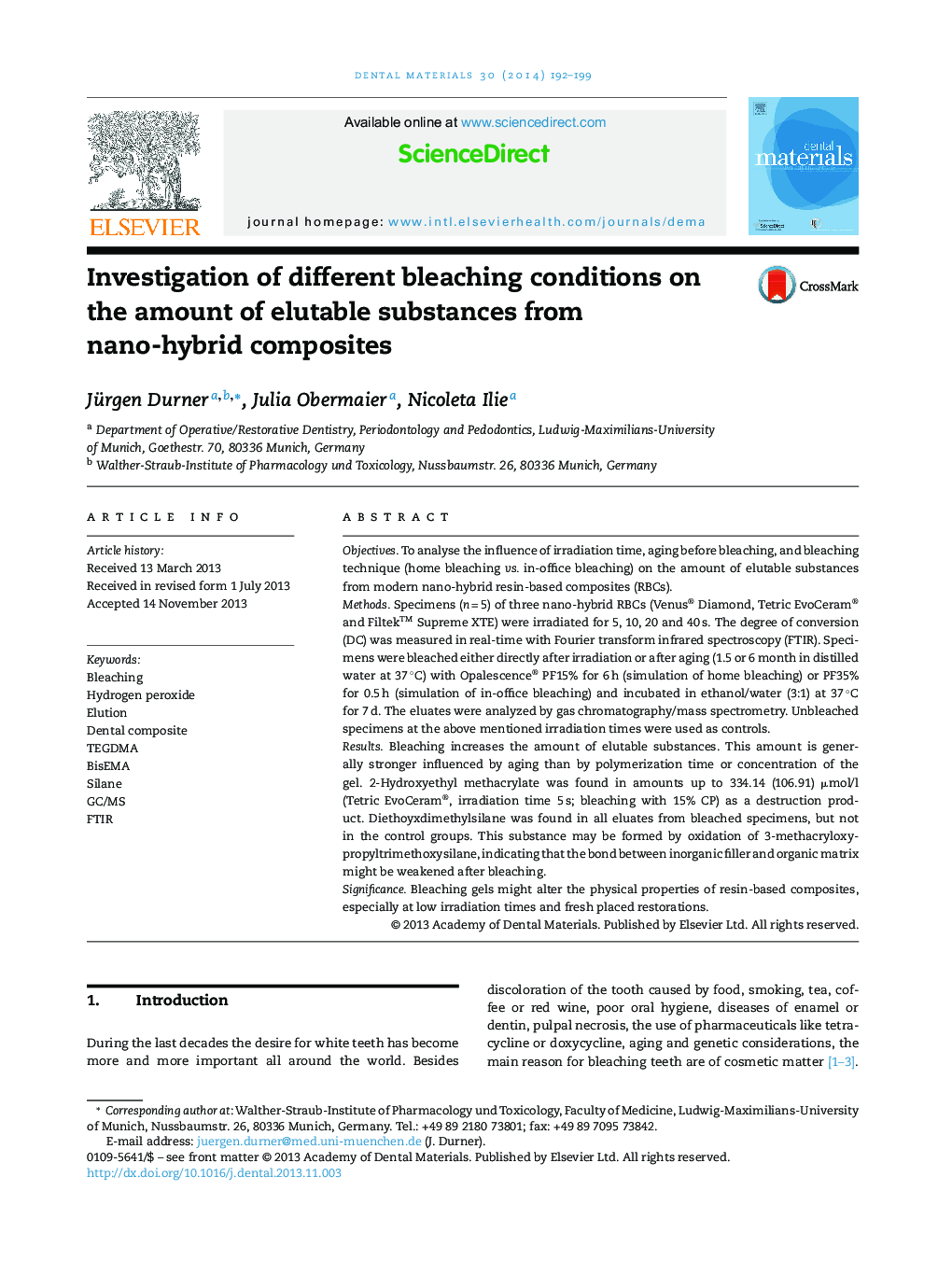| Article ID | Journal | Published Year | Pages | File Type |
|---|---|---|---|---|
| 1420903 | Dental Materials | 2014 | 8 Pages |
ObjectivesTo analyse the influence of irradiation time, aging before bleaching, and bleaching technique (home bleaching vs. in-office bleaching) on the amount of elutable substances from modern nano-hybrid resin-based composites (RBCs).MethodsSpecimens (n = 5) of three nano-hybrid RBCs (Venus® Diamond, Tetric EvoCeram® and Filtek™ Supreme XTE) were irradiated for 5, 10, 20 and 40 s. The degree of conversion (DC) was measured in real-time with Fourier transform infrared spectroscopy (FTIR). Specimens were bleached either directly after irradiation or after aging (1.5 or 6 month in distilled water at 37 °C) with Opalescence® PF15% for 6 h (simulation of home bleaching) or PF35% for 0.5 h (simulation of in-office bleaching) and incubated in ethanol/water (3:1) at 37 °C for 7 d. The eluates were analyzed by gas chromatography/mass spectrometry. Unbleached specimens at the above mentioned irradiation times were used as controls.ResultsBleaching increases the amount of elutable substances. This amount is generally stronger influenced by aging than by polymerization time or concentration of the gel. 2-Hydroxyethyl methacrylate was found in amounts up to 334.14 (106.91) μmol/l (Tetric EvoCeram®, irradiation time 5 s; bleaching with 15% CP) as a destruction product. Diethoyxdimethylsilane was found in all eluates from bleached specimens, but not in the control groups. This substance may be formed by oxidation of 3-methacryloxy-propyltrimethoxysilane, indicating that the bond between inorganic filler and organic matrix might be weakened after bleaching.SignificanceBleaching gels might alter the physical properties of resin-based composites, especially at low irradiation times and fresh placed restorations.
